Skeletons may have been massacred - or simply dead slaves
Peter Allen
Source - http://www.dailymail.co.uk/news/article-2725940/Mystery-ancient-Gauls-dumped-pit-French-skeletons-massacred-simply-dead-slaves.html?ITO=1490&ns_mchannel=rss&ns_campaign=1490
Skeletons exhumed from boggy area which was once the site of salt mines
Eight skeletons including two of children dating back to the Iron Age have been found in good condition in France.
The extraordinary archaeological discovery was made in Marsal, in the east of the country, in the Lorraine region, close to the border with Germany.
Dating back to around 500BC, all were exhumed from a wet, boggy area which was once the site of extensive salt mines, but is now surrounded by an industrial estate.
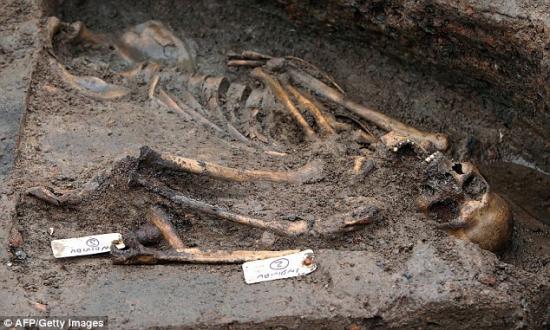
Eight skeletons dating back to about 500BC have been found in an ancient grain silo near a Celtic salt mining site in Marsal, eastern France
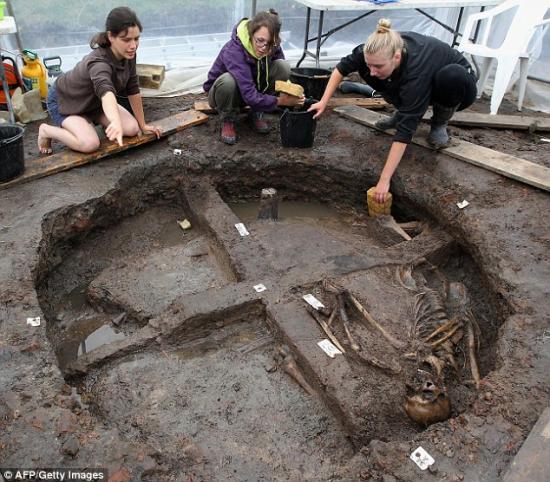
Researchers examine human remains during excavation works in Marsal, in the Lorraine region of France
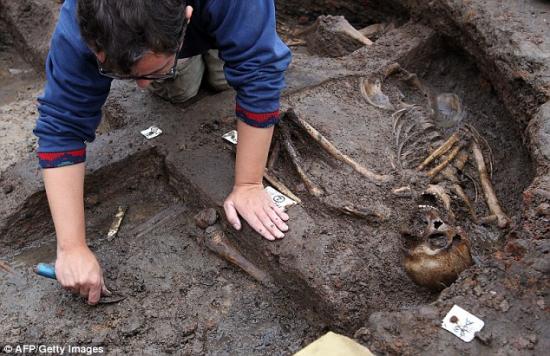
The skeletons were exhumed from a wet, boggy area which was once the site of extensive salt mines, but is now surrounded by an industrial estate
It is excavated most summers by a team led by Laurent Olivier, curator of the National Archaeological Museum at Saint-Germain-en-Laye, near Paris.
Mr Olivier said: ‘This wasn’t a tomb, these bodies were dumped in a former grain silo as carcasses, with their faces against the ground. They were in all kinds of positions and stacked one against the other.’
The disorganised dumping of the bodies suggested they might be victims of disease, or even executions. Some had their mouths wide open, as if in a grimace, when found.
At the time, what was to become known as Paris was a nondescript fishing village, while different warring tribes roamed the rest of the country.
Those who settled around the salt mines were Celts who would be called Gauls by the Romans when they took control of the area which is now modern day France.
The skeletons will now be examined to try and learn more about such people, Mr Olivier told French news agency AFP.
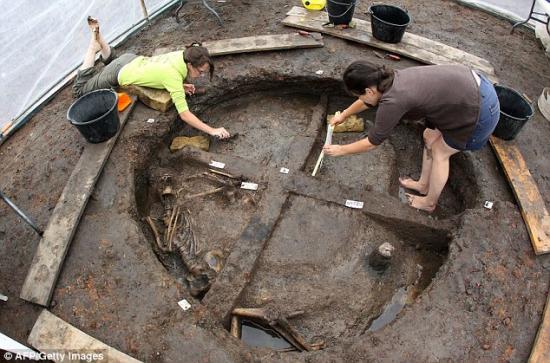
The disorganised dumping of the bodies suggested they might be victims of disease, or even executions. Some had their mouths wide open, as if in a grimace, when found
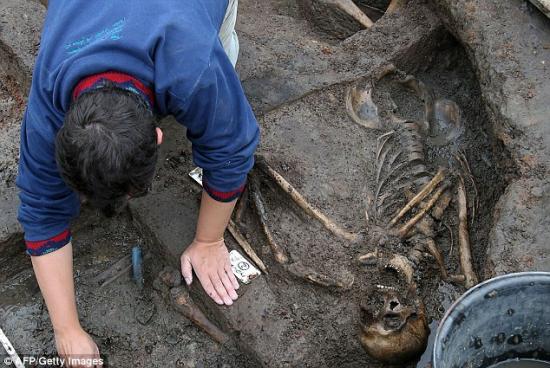
The skeletons, which were found in wet and salty soil which would have preserved them over the centuries, will all now undergo laboratory tests
‘This raises a lot of social issues,’ he said. ‘Is this the result of a massacre, of an epidemic? Obviously these were people of low social status, perhaps even slaves.’
The skeletons, which were found in wet and salty soil which would have preserved them over the centuries, will all now undergo laboratory tests.
Mr Olivier said lots of interesting data could be compiled – including the day-to-day lives of those killed.
Marsal was one of Europe's largest centres of salt production at the time of the Iron Age, producing the mineral on an almost industrial scale.
It was not until around 125 BC that the south of Gaul was conquered by the Romans, with Julius Caesar winning the rest of the country and defeating a revolt by Vercingetorix, the Gallic chief, in 52BC.
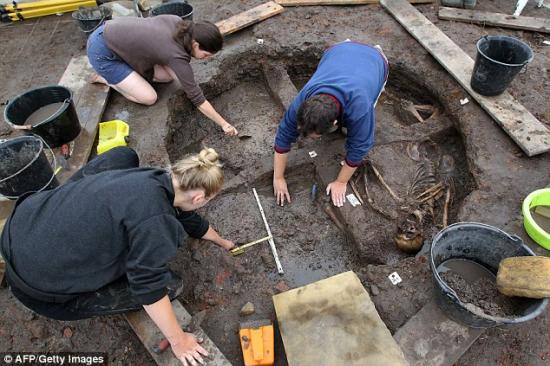
The site is excavated most summers by a team led by Laurent Olivier, curator of the National Archaeological Museum at Saint-Germain-en-Laye, near Paris
Two years ago, French archaeologists found a perfectly preserved skeleton of a woolly mammoth which lived at least 20,000 years ago near Paris.
It was found next to two flint blades - suggesting Neanderthal hunters would have been cutting it up for meat after hunting the creature down.
The incredible discovery saw the bones and tusks of the prehistoric animal dug up by archaeologists at Changis-Sur-Marne, on the banks of the Marne River.
It was buried under sandy soil, making it relatively easy to excavate, with the archaeologists using it to reconstruct its last movements before it was finally placed in a museum.